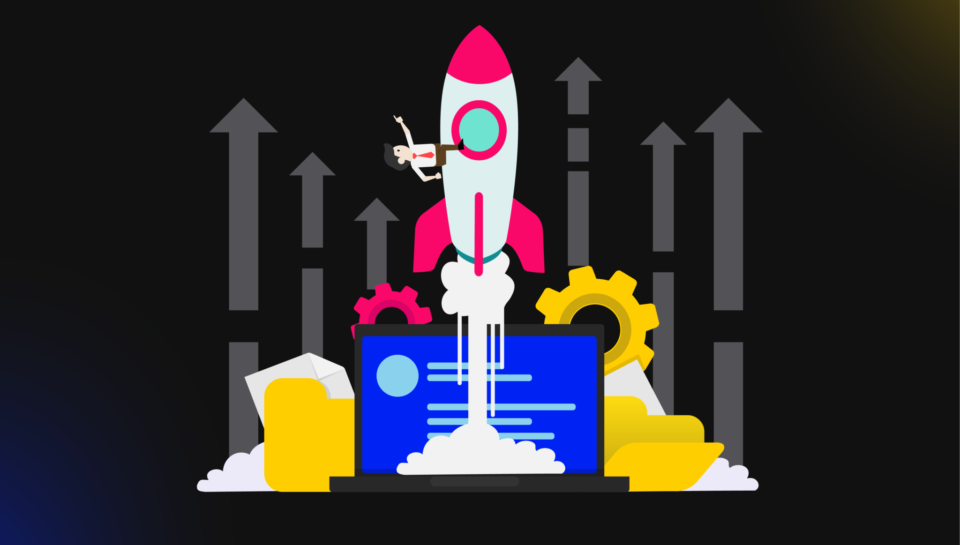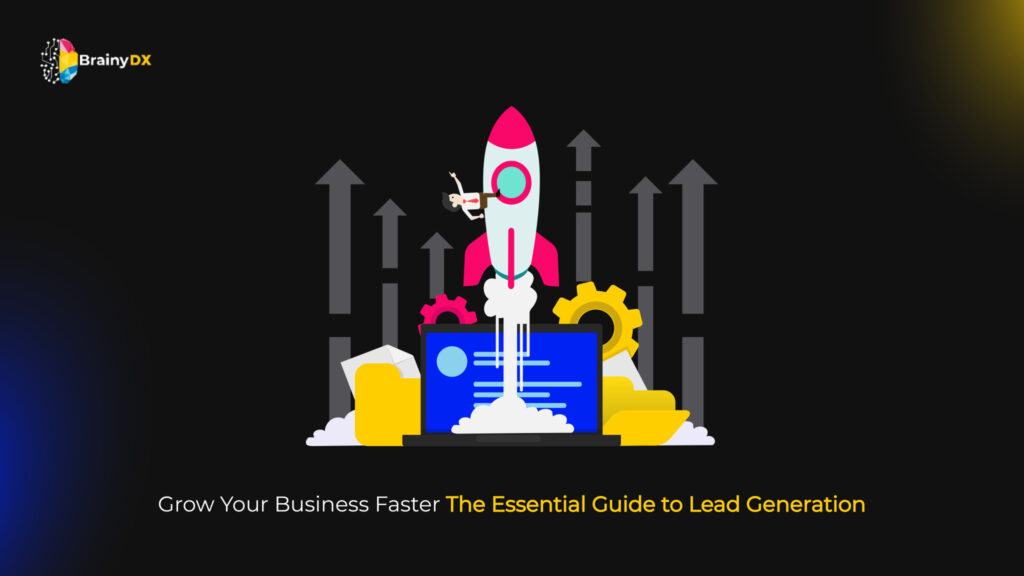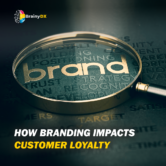
Grow Your Business Faster: The Essential Guide to Lead Generation
Grow Your Business Faster: The Essential Guide to Lead Generation

Empowered by smartphones and the internet, consumers can access a limitless sea of information at their fingertips. From podcasts and videos to blog posts and social media, they can easily find information about different brands.
If you’re tasked with attracting potential customers, you know the challenges of generating high-quality leads.
This article will explore lead generation in detail. We’ll discuss the different types of leads you can attract and provide some strategies and examples for lead generation that you can implement right away.
What is Lead Generation?
Lead generation is a marketing process for capturing potential customers who show interest in your product or service.
By connecting with people early in the buying process, you can build trust and establish a relationship. This way, when they’re ready to make a purchase, they’ll choose your brand.
Lead generation also serves secondary purposes, including:
- Building brand awareness
- Collecting customer data
- Fostering brand loyalty
The Different Types of Leads
Sales are the engine that drives any business. There are different approaches to sales depending on the industry. However, all salespeople need to target the people most likely to buy.
Leads typically fall into seven categories:
- Hot Leads: Ready to convert, qualified, and interested in your offering. They are most likely to convert to a sale.
- Cold Leads: Unfamiliar with your brand or offering and haven’t shown any interest yet. These are the most challenging leads to convert.
- Warm Leads: Somewhat familiar with your brand and offering. They may watch your videos or read your blogs but haven’t contacted you directly. Your goal is to nurture them into hot leads.
- Information Qualified Leads (IQLs): These leads have shown some interest and followed a call to action, such as signing up for your email list or filling out a lead generation form. They’re looking for more information and will respond well to a nurturing campaign.
- Marketing Qualified Leads (MQLs): MQLs are further down the pipeline than IQLs. They are actively searching for a solution and trying to determine if yours is the right fit. These leads download white papers, watch videos, and attend webinars.
- Sales Ready Leads (SRLs): These potential customers are well into the sales funnel. To convert them, prioritize understanding their budget, purchasing authority, specific needs, and timeframe for making a decision.
- Sales Qualified Leads (SQLs): Prioritize these sales-qualified leads with immediate purchase intent. Be mindful, they might still consider other options.
The Lead Generation Process
Lead generation is a multi-step process. The specific approach will vary depending on whether you’re using inbound or outbound generation, but both should follow a similar path.
Step 1: Conduct Research
Before diving into lead collection, take a deep dive into your target audience. Uncover who they are, their demographics, what keeps them up at night (their biggest pain points), and their core values.
Step 2: Create High-Quality Content
Turn Customer Insights into Content Gold:
Understanding your target audience is like having a treasure map to their needs and desires. Unearth valuable information and transform it into content that resonates.
Match the Medium to the Message:
Not all content is created equal! Consider the platform where you’ll be sharing your message. Short, engaging videos might be perfect for social media, while email allows for more in-depth explanations.
Become a Content Hero, Not a Salesman:
People crave valuable information, not a constant sales pitch. Focus on creating content that educates, entertains, or solves problems for your audience. By building trust and establishing yourself as an expert, you’ll naturally attract customers.
Every Piece with a Purpose:
There’s no room for filler content! Each piece you create should have a clear goal, whether it’s informing your audience about a new product, promoting a special offer, or simply building brand awareness.
Step 3: Create Lead Generation Database
You can have the most promising leads, but they won’t be beneficial if you don’t manage them properly.
Create a lead database to record, study, segment, and filter your potential customers. Ideally, you’ll want an automated CRM system to streamline this process.
Step 4: Nurturing Leads Like a Pro: Scoring for Success
Not all leads are created equal. Some are hot on the trail, ready to close a deal, while others are just dipping their toes in. The key is to tailor your approach to fit each lead’s stage in the buying journey.
Many businesses leverage lead scoring, a system (often using a 0-100 scale) that reflects a lead’s place in the sales funnel. Points are awarded based on specific actions, with more valuable actions earning higher scores. This allows you to prioritize leads effectively and dedicate resources to those closest to conversion.
Best Practices for Lead Generation
These are tips to optimize your lead generation efforts:
- Utilize Your Data: Analyze information about leads and successful strategies to identify recurring themes and what resonates with your audience.
- Maintain Consistent Messaging: Ensure clear calls to action and a consistent tone of voice across all channels to guide prospects through the sales funnel.
- A/B Testing: Regularly test different versions of your marketing materials (headlines, images, body copy) to identify what performs best.
- Leverage CRM Technology: Implement a lead generation platform to gather information, monitor website behavior, and optimize campaigns.
- Craft Enticing Offers: Tailor offers to different buying stages. Provide valuable content for those who are just starting their research, and offer free trials or demos to those further along the funnel.
- Integrate Social Media: Use social media to initiate conversations and interactions with leads at all stages of the buyer’s journey.
- Clean Landing Pages: Present information clearly and concisely on landing pages. Make it easy for visitors to find the information they need and take the desired action.
- Partner with Others: Co-marketing with complementary businesses allows you to reach a wider audience and generate new leads through mutually beneficial offers.
- Involve Your Sales Team: Collaborate with your sales team throughout the lead generation process. Their insights can help move leads through the buying journey and ensure alignment on terminology.
- Remarket Consistently: Retarget website visitors who haven’t converted to increase the chances of a sale.
- Prioritize Lead Generation: Make lead generation a core part of your marketing strategy. While it takes time and effort, consistent work will generate the results you desire.
BrainyDX: Your Lead Generation Powerhouse in 2024
Struggling to attract high-quality leads? BrainDx can help. Our expert marketing agency uses data-driven strategies to identify your ideal customer and craft targeted campaigns that get results.
We offer a comprehensive suite of lead generation services, including:
- Content Marketing: We create informative blog posts, social media content, and other engaging materials that attract your target audience and establish you as a thought leader.
- Social Media Marketing: Unleash the power of Facebook, Instagram, and beyond! We craft engaging social media content to connect with your target audience, build brand awareness, and nurture leads on the platforms they use most.
- Email Marketing: Say goodbye to bored inboxes! Our targeted email campaigns turn passive viewers into engaged customers.
- Lead nurturing: We nurture leads through the sales funnel with valuable content and offers, ultimately converting them into loyal customers.
BrainyDx doesn’t just generate leads, we generate qualified leads ready to convert. Contact us today and let’s discuss how we can help your business thrive in 2024!
Conclusion
Your business thrives on a steady flow of potential customers. This is where lead generation comes in. By carefully nurturing both interested prospects and existing clients, you can build a robust sales pipeline and reach your sales targets.
The key is quality over quantity. Focus on attracting high-caliber leads with a strong conversion potential. Lead generation is a continuous process, but with consistent implementation of these strategies and ongoing refinement, you’ll be well on your way to cultivating a stream of qualified leads that fuel your business growth.


